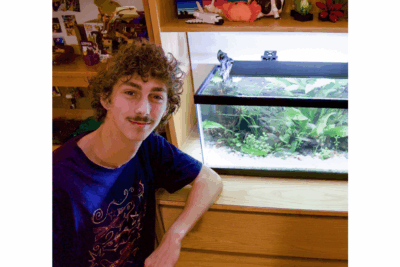As some may know, April is Autism Awareness Month. For quite some time now, I’ve had the urge to write something centering around this subject for some time.
My diagnosis happened during the period where the number of school age children being diagnosed with Autism was on the rise. According to a 2016 study conducted by the Center for Disease Control, 1 in 68 school age children have been diagnosed with autism. The rate at which individuals have been diagnosed with Autism Spectrum Disorder has steadily increased every year since 2000.I was diagnosed with Autism Spectrum Disorder in 2003. In the 15 years since my diagnosis, I’ve had a front row seat to the evolution of the perception and treatment of people who fall somewhere on the autism spectrum.
Now, I’m not an expert on the subject of autism by any stretch of the imagination. I can only imagine that the uptick in diagnosis over a nearly 20-year period influenced a shift in the perception and treatment of people with autism. When I look at a lot of what out in the world now for people, specifically children with autism, it honestly warms my heart.
When I was younger, there was some basic occupational therapy programs available for children on the spectrum. The amount of resources that have been developed since my childhood honestly, deep down, raises a small feeling of jealousy. Now children on the spectrum have various apps to help them adjust to a world that wasn’t built with them in mind.
I read an NPR story last year of two psychology graduate students at Indiana State University developed a program teaches children with autism interpersonal skills through improv.
I found that completely fascinating, the idea of taking something organic and free flowing like improv and using it in a sensory controlled environment in order to help children learn how to read facial expression and non verbal cues.
I can’t help but be happy for all of the children who have access to these resources that weren’t available to me when I was growing up learning how to adjust to a world that wasn’t built with people like me in mind. I feel like I would be light years ahead of where I am now if I had access to what is available now.
Outside of therapeutic and occupational resources, the biggest shift I’ve seen is the representation of autism in entertainment media.
Don’t get me wrong, there have been characters in various pieces of media who were portayed as someone with some sort of autism, for instance Dustin Hoffman’s character in “Rain Man.” A movie I dislike with a passion for its repetition, but it was a product of it’s time. So, I digress.
In the past 5 to 10 years, there as been an increase in autism representation in popular media. Each represents at least one sliver of the autism spectrum.
Several of these portrayals may be familiar to some. Most recently autism has made its way to prime time with the ABC medical drama, “The Good Doctor.” This show is focused on the character Dr. Shaun Murphy, a surgeon who happens to be an autistic savant, played by “Bates Motel” actor Freddie Highmore.
Others include that of Julia, a puppet on “Sesame Street,” a young girl who exhibits a sensitivity to certain stimuli such as lighting and crowded places along with difficulties socializing with her young counterparts. Yet the children and other puppets on the show do their best to make Julia feel included with everyone else.
Julia is an interesting addition to the line-up. The character is portrayed by Stacey Gordon, a puppeteer who happens to have a son with autism. As such, Gordon brings perspective on autism to her work portraying Julia.
Julia might be one of the best modern depictions of autism for the purposes of autism awareness among children. By seeing the character of Julia, children are being taught to accept their a-neurotypical peers instead of ostracizing them. Doing so is a step in the right direction in autism awareness in younger generations, which is something I feel was nearly nonexistent when I was diagnosed nearly 15 years ago.
“Man, I really wish that kids in my son’s class had grown up with a Sesame Street that had modeling [of] the behavior of inclusion of characters with autism,” Gordon said in an interview with NPR in early 2017.
Sam, a teenager on the autism spectrum from the Netflix sitcom, “Atypical,” is played by actor Keir Gilchrist. If one were to ignore the glaring flaws of the show as a whole, Gilchrist’s portrayal of Sam is a fairly spot on depiction of someone with high functioning autism. The most striking aspect of the portrayal is when the show depicts what is called sensory overload; where someone with autism is overwhelmed by their surrounding environment and shuts down. While sensory overload might be experienced differently by other people on the spectrum, I thought this depiction was spot on with what I have experienced.
Autism Spectrum Disorder is such a complex neurological disorder that none of these portrayals will be a 100 percent accurate. I don’t think any one of these portrayals should be the basis of how someone sees autism in the real world.
I think that people should take the type of person that, combined, all of the modern portrayals represent and use that to view their atypical peers as people who simply process the world in a different manner than they do. And maybe become a little more understanding.
Because as stated by Dr. Stephen Shore in Stephen Silberman’s New York Times Bestseller on the history of autism “NeuroTribes,” “If you’ve met one person with autism, you’ve met one person with autism.”



